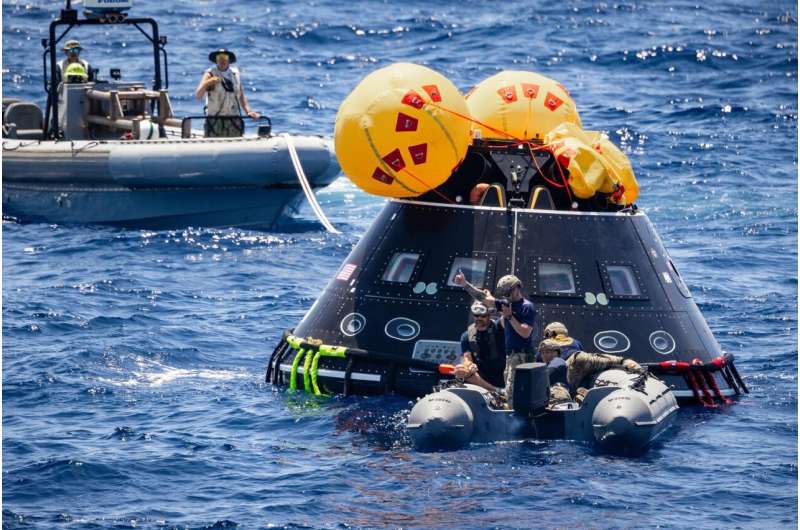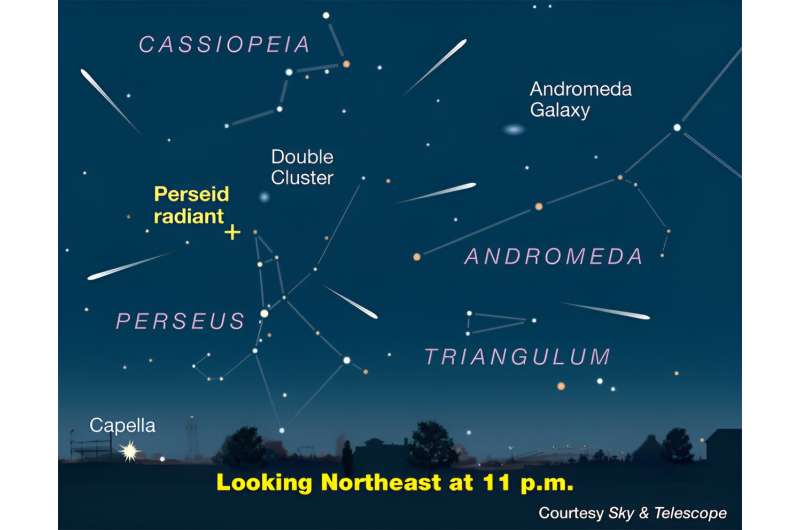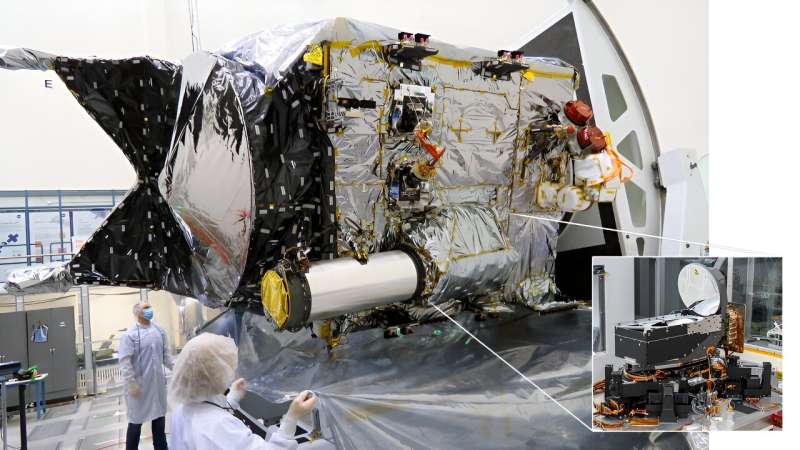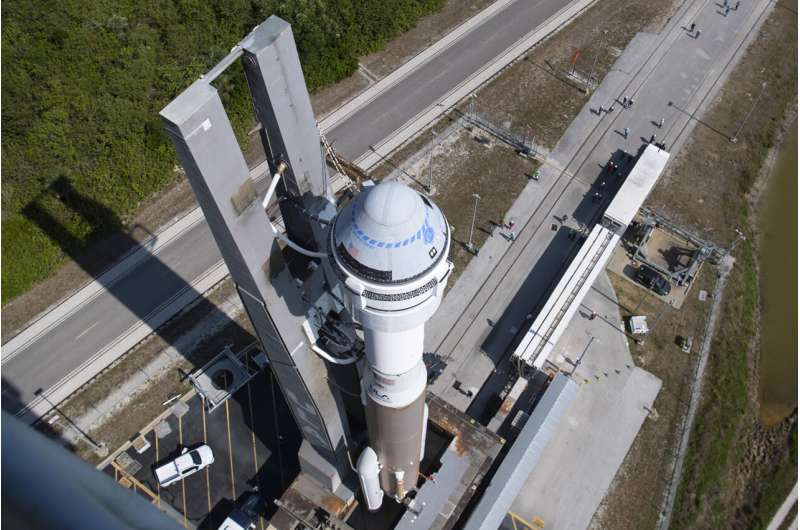
Copernical Team
IBM collaborates with NASA to launch Geospatial AI on Hugging Face
 IBM, in partnership with Hugging Face, has released its advanced geospatial foundation model developed using NASA's satellite data, marking it as the most extensive geospatial model on the Hugging Face platform. Notably, it's also the premier open-source AI foundation model that boasts a collaborative creation process with NASA.
The contemporary world of climate science is characterized by
IBM, in partnership with Hugging Face, has released its advanced geospatial foundation model developed using NASA's satellite data, marking it as the most extensive geospatial model on the Hugging Face platform. Notably, it's also the premier open-source AI foundation model that boasts a collaborative creation process with NASA.
The contemporary world of climate science is characterized by Nuclear spin's impact on biological processes uncovered
 A research team led by Prof. Yossi Paltiel at the Hebrew University of Jerusalem with groups from HUJI, Weizmann and IST Austria new study reveals the influence of nuclear spin on biological processes. This discovery challenges long-held assumptions and opens up exciting possibilities for advancements in biotechnology and quantum biology.
Scientists have long believed that nuclear spin had
A research team led by Prof. Yossi Paltiel at the Hebrew University of Jerusalem with groups from HUJI, Weizmann and IST Austria new study reveals the influence of nuclear spin on biological processes. This discovery challenges long-held assumptions and opens up exciting possibilities for advancements in biotechnology and quantum biology.
Scientists have long believed that nuclear spin had Hypersonics Capability Center: Northrop Grumman's next step beyond Mach 5
 Northrop Grumman Corporation has unveiled its Hypersonics Capability Center (HCC) in Elkton, Maryland. This innovative facility is primed to deliver cutting-edge propulsion systems that will propel hypersonic missiles at speeds surpassing Mach 5.
In response to the U.S. Department of Defense's (DoD) increasing need for long-range and swift-response weapons, the HCC is purpose-built as a ne
Northrop Grumman Corporation has unveiled its Hypersonics Capability Center (HCC) in Elkton, Maryland. This innovative facility is primed to deliver cutting-edge propulsion systems that will propel hypersonic missiles at speeds surpassing Mach 5.
In response to the U.S. Department of Defense's (DoD) increasing need for long-range and swift-response weapons, the HCC is purpose-built as a ne Boeing says troubled Starliner will be ready to fly crew by March
 Boeing on Monday said its Starliner spaceship will now be ready to carry out its first crewed flight by March - though the actual launch date will depend on space calendar constraints.
The troubled program has experienced numerous postponements but was finally meant to send astronauts to the International Space Station on July 21.
During testing, however, Boeing engineers identified new
Boeing on Monday said its Starliner spaceship will now be ready to carry out its first crewed flight by March - though the actual launch date will depend on space calendar constraints.
The troubled program has experienced numerous postponements but was finally meant to send astronauts to the International Space Station on July 21.
During testing, however, Boeing engineers identified new Portugal blaze
 Image:
With Portugal in the grip of a heatwave, a wildfire broke out on 5 August south of Odemira in the Alentejo region in southern Portugal. This image, captured by the Copernicus Sentinel-2 satellite mission, shows the fire on 7 August.
Image:
With Portugal in the grip of a heatwave, a wildfire broke out on 5 August south of Odemira in the Alentejo region in southern Portugal. This image, captured by the Copernicus Sentinel-2 satellite mission, shows the fire on 7 August. NASA search and rescue team prepares for safe return of Artemis II crew

When Artemis II NASA astronauts Reid Wiseman, Victor Glover, Christina Hammock Koch, and Canadian Space Agency astronaut Jeremy Hansen splash down in the Pacific Ocean after a 10-day mission around the moon, NASA's landing and recovery team will be ready to bring the Orion capsule and our astronauts back to land.
A major player in the capsule recovery and Artemis II crew safety is NASA's Search and Rescue office based at the agency's Goddard Space Flight Center in Greenbelt, Maryland, and managed by the Space Communications and Navigation (SCaN) program at NASA Headquarters.
For over 40 years, the search and rescue office has aided the international Cospas-Sarsat Program in the development of search and rescue technologies. These technologies allow hikers, boaters, and pilots activate a distress beacon should they find themselves in trouble. Since 1982, the system has been responsible for saving over 50,000 Earth explorers.
Now, the office is applying their years of expertise to support NASA's Artemis moon missions. For Artemis II, NASA is equipping second-generation beacons called Advanced Next-Generation Emergency Locators (ANGEL) on the astronauts' life preservers and installing another location beacon onto the Orion capsule so both can be located quickly.
Antarctica vulnerable to extreme events

According to the World Meteorological Organization, July 2023 is likely to have been the hottest month on record. While much of Europe, North America and Asia suffered the immediate consequences of these brutal temperatures, extreme events are also hitting hard far away in the icy reaches of Antarctica. In a paper published today, scientists highlight Antarctica’s vulnerability to extremes and the role that satellites play in monitoring this remote region.
A banner year for the Perseid meteor shower

The Perseid meteor shower, a celestial event eagerly awaited by millions of skywatchers around the world, is about to make its annual return to the night sky. The shower is predicted to reach its peak before dawn on Sunday, August 13, but viewers should plan to start looking for meteors already at nightfall on Saturday, August 12. In a dark site away from light pollution, at the peak of the shower, observers might see one meteor per minute.
"Conditions this year couldn't be more perfect," says Diana Hannikainen, Sky & Telescope's Observing Editor. "The waning crescent moon, which is only 8% illuminated, rises in the wee hours of the morning on August 13 and won't interfere with viewing.
NASA's deep space communications to get a laser boost

Set to launch this fall, NASA's Deep Space Optical Communications (DSOC) project will test how lasers could speed up data transmission far beyond the capacity of current radio frequency systems used in space. Known as a technology demonstration, DSOC may pave the way for broadband communications that will help support humanity's next giant leap: when NASA sends astronauts to Mars.
Boeing's 1st astronaut flight bumped into next year, more repairs needed

Already running years behind, Boeing's first astronaut flight is now off until at least next March.
Problems with the parachute lines and flammable tape surfaced during final reviews in late spring, ahead of what should have been a July launch for the Starliner capsule.

































